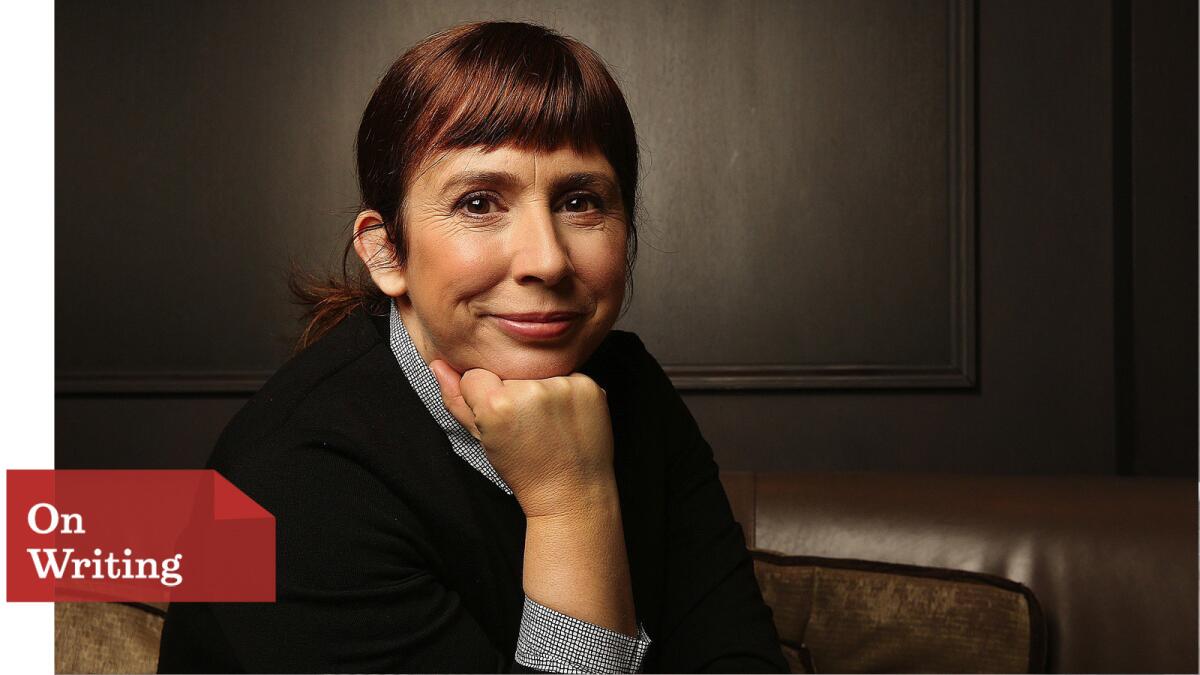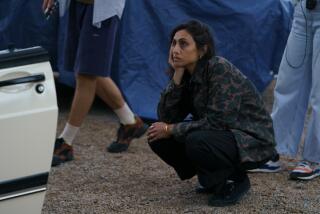‘Suffragette’ was pitched as ‘a kick-ass movie where women in corsets get to blow things up’

- Share via
“Suffragette” was a labor of love. Sarah Gavron, the director, and I had worked together before, bringing to the screen “Brick Lane,” which was based on Monica Ali’s novel of the life of a Bangladeshi woman living in the heart of East London. A woman who arrives in a country where she does not know the language and over time finally finds her voice. Delving into the past for “Suffragette,” to focus on the militant fight fought by a determined group of Edwardian women to gain the vote for women in 1913 Britain, was not dissimilar. Both stories focused on giving voice to the voiceless, the working-class, often illiterate foot soldiers who had not been written about before and certainly had not been portrayed in a movie before.
Supported by producers Faye Ward and Alison Owen, our producers on “Brick Lane,” we pitched the film as “a kick-ass movie where women in corsets get to blow things up.” It stirred interest. Both ours and financiers’. The producers talked numbers and we worked on the script. And kept working. Six years of working. As financiers came and went and we stumbled and then picked ourselves up again. Slowly we evolved it into a film that would take fictional composites of real working-class women and collide them with factual and iconic moments in suffragette history. Focusing on an intense 16 months when the 40 years of peaceful protest finally gave way to the militant activism that would lead to one woman’s death.
A wealth of research began to amass around us. Later we would download it onto a website to become the bible for the entire creative team to draw upon and add to. Newspaper articles, Pathé newsreels — serendipitously, Pathé also became a part of getting the movie made, in the brilliant form of Cameron McCracken. Photographs and police records, only declassified in 2003, revealed the extent of the intimidation and surveillance of these women. Medical reports that exposed the brutal torture and force feeding. Testimonials of working women who delivered these tiny, brutal and shocking insight into their lives in person at Westminster to try to gain the vote were haunting. Totemic suffragette memorabilia from medals to prison bread to the tiny red leather purse Emily Wilding Davison, one of the most iconic suffragettes and a character within our film, carried on a fateful trip to the Derby, close to the end of the movie. These became the carrots that led us on, kept us working and endlessly editing and reworking material.
And then we learned the budget — $14 million. Not bad. But hardly “The Bourne Supremacy.” The car chases went. The corsets stayed. Sarah had lunch with Carey Mulligan and thankfully she got on board. Meryl Streep quickly followed: an iconic actress to play an iconic figure in suffragette history. She played a five-minute scene on a balcony shot over three days in a square in East London and yet her light would resonate throughout the movie.
Watching four of our actresses laughing and talking on the set — Carey, Meryl, Helena Bonham Carter and Anne-Marie Duff — I was reminded how rare it is to have a cast of women at the helm. At first, agents were worried the male parts weren’t big enough. There wasn’t enough for an actor to do. We bit our tongues and hoped. Then Ben Whishaw and Brendan Gleeson came on and made these parts rich, complex and their own, vital to the story.
Now, as it plays for U.S. audiences, what is surprising and more important than the film itself is the conversations around it. Important issues, important discourse that hopefully echo the very tenor of the suffragette movement. Equality for all women across the world.
More to Read
The biggest entertainment stories
Get our big stories about Hollywood, film, television, music, arts, culture and more right in your inbox as soon as they publish.
You may occasionally receive promotional content from the Los Angeles Times.










